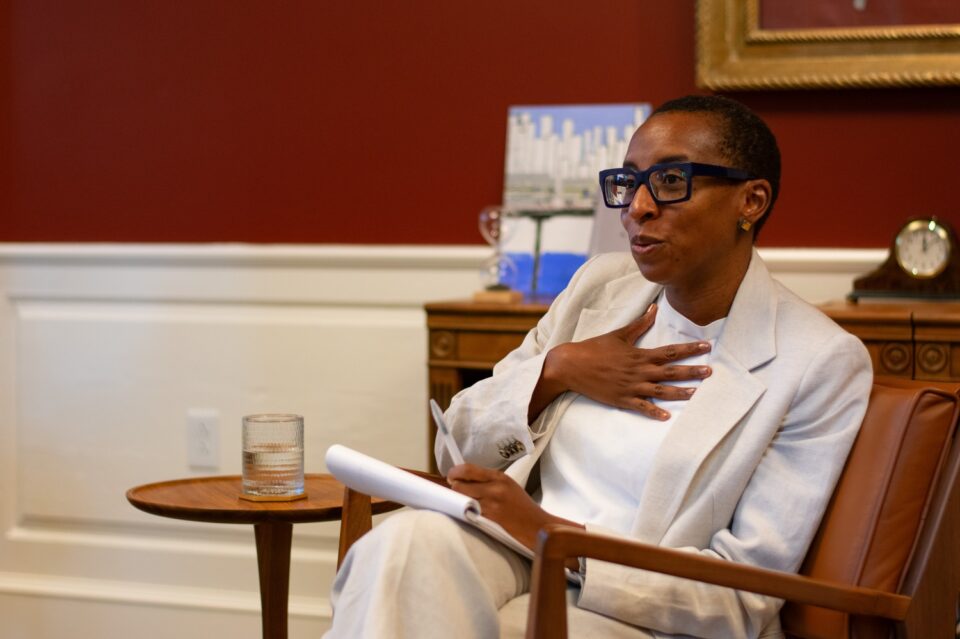Writer Admits ‘Shaming and Bullying’ Colleagues
Musk Calls DEI ‘Propaganda Words for Racism’
His Show Canceled, Madhi Hasan Leaving MSNBC
Despite DEI ‘Bright Spots,’ Investigative Units Lag
. . . Mc Nelly Torres, a V.P., Exits NAHJ Board
Reporter Miguel Almaguer Out at NBC News
‘Color Purple’ Sales Fall, So Does Audience Diversity
Stockwell to Run Washington Post Local Coverage
Miami Herald Calls Cuba’s Revolution a Failure
N.Y. Times’ Lelyveld Remembered With Affection
Passings: Gustavo Cisneros, Kirt Dozier, Raylena Fields, Peter Magubane, Bobby Rivers
Short Takes: Committee to Protect Journalists wants investigation of latest killings; Israel-Hamas war’s challenges for journalists; Pivot Fund and Press Forward initiative; Jonathan Capehart tears up; right-wing media’s falsehoods on Trump; FCC and broadcast ownership; Edwina Blackwell Clark;
repatriating ancestral remains and sacred objects to tribal nations; need for bail reform; menthol cigarette ban; new details on transatlantic slave trade;
Monica Pearson; Karen Grigsby Bates; Eugene Robinson and Avis Collins Robinson; Shaquille O’Neal; criminal defamation progress in South Africa; abuse of journalists in Democratic Republic of Congo; Panama’s journalist abused by both police and protesters; Zimbabwe trains community in media literacy and reporting skills; Guinea blocks radio, TV stations.
‘The Cuban Revolution Turns 65. It Broke Cuba, but Not Its People’ (text of Miami Herald editorial)
Not Ooga-booga Journalism: Joseph Lelyveld Stood Up for Africa at The New York Times, by Milton Allimadi
Letter to the Editor: On Claudine Gay
Updated Jan. 8
Homepage photo: Claudine Gay, by Julian J. Giordano/Harvard Crimson
Support Journal-ismsAfter Claudine Gay’s resignation as Harvard president, the “PBS NewsHour” solicited opinions from Khalil Gibran Muhammad of Harvard’s Kennedy School and Tom Nichols of The Atlantic. (video)
Writer Admits ‘Shaming and Bullying’ Colleagues
“It’s really a textbook example of successful conservative activism, and the strategy is quite simple,” right-wing activist Christopher Rufo, who also considers himself a journalist, told Politico’s Ian Ward on Wednesday.
 Rufo (pictured) was discussing the roles he and others on the right played in forcing the resignation of Claudine Gay, the first Black president of Harvard University “and a political scientist held in high regard by her peers,” as Ward described her.
Rufo (pictured) was discussing the roles he and others on the right played in forcing the resignation of Claudine Gay, the first Black president of Harvard University “and a political scientist held in high regard by her peers,” as Ward described her.
Rufo and Christopher Brunet, a former reporter at the Tucker Carlson-founded website the Daily Caller who writes an online newsletter at karlstack.substack.com, “broke the story of Claudine’s plagiarism on December 10,” Rufo continued.
“It drove more than 100 million impressions on Twitter, and then it was the top story for a number of weeks in conservative media and right-wing media. But I knew that in order to achieve my objective, we had to get the narrative into the left-wing media. But the left-wing uniformly ignored the story for 10 days and tried to bury it, so I engaged in a kind of a thoughtful and substantive campaign of shaming and bullying my colleagues on the left to take seriously the story of the most significant academic corruption scandal in Harvard’s history.
“Finally, the narrative broke through within 24 hours of my announcement about smuggling the narrative into the left-wing media. You see this domino effect: CNN, BBC, The New York Times, The Washington Post and other publications started to do the actual work of exposing Gay’s plagiarism, and then you see this beautiful kind of flowering of op-eds from all of those publications calling on Gay to resign. Once my position — which began on the right — became the dominant position across the center-left, I knew that it was just a matter of time before we were going to be successful.”
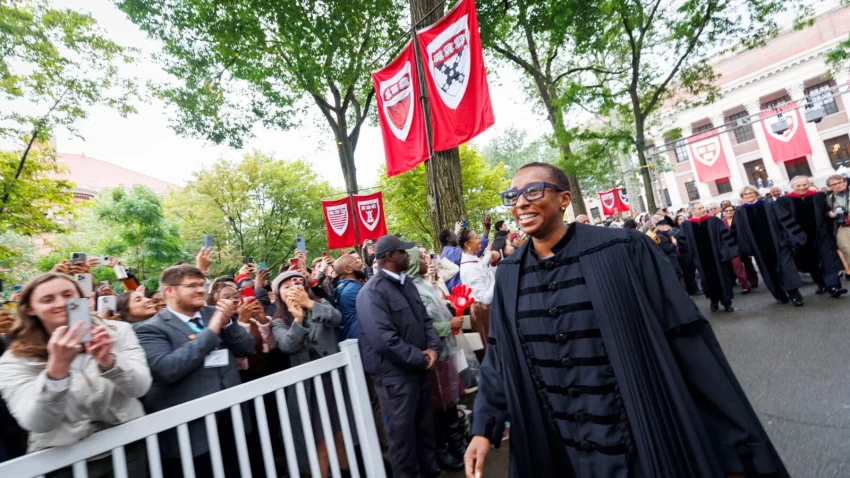
The Gay controversy began with congressional testimony. As Eugene Robinson wrote for the Washington Post, “leading the nation’s oldest, richest and most prestigious university made Gay a public figure. In this aspect of the job, she failed spectacularly on Dec. 5, at a hearing of the House Committee on Education and the Workforce, when Rep. Elise Stefanik (R-N.Y.) asked Gay whether ‘calling for the genocide of Jews’ was a violation of Harvard’s policies against bullying and harassment.
“ ‘It can be, depending on the context,’ Gay replied.
“Wrong answer.” Other university presidents at the hearing — University of Pennsylvania President Liz Magill and Massachusetts Institute of Technology President Sally Kornbluth — were similarly criticized, and Magill resigned.
Ward asked Rufo, “Do you think that playbook works on any issue, or do you think that the Israel-Palestine issue is unique, insofar as it’s already dividing elite liberal organizations?”
Rufo replied, “I’ve run the same playbook on critical race theory, on gender ideology, on DEI bureaucracy. For the time being, given the structure of our institutions, this is a universal strategy that can be applied by the right to most issues. I think that we’ve demonstrated that it can be successful.”
Marc Lamont Hill, author, activist and professor of anthropology at the City University of New York, reports on Claudine Gay’s resignation. He said she should be replaced by a Black woman. (Credit: YouTube)
Brunet and Rufo were not the only conservative journalists who went after Gay, and the plagiarism allegations were just an opening to go after bigger targets.
Gay herself, in an op-ed Wednesday for The New York Times, said, “The campaign against me was about more than one university and one leader. This was merely a single skirmish in a broader war to unravel public faith in pillars of American society. Campaigns of this kind often start with attacks on education and expertise, because these are the tools that best equip communities to see through propaganda. But such campaigns don’t end there.
“Trusted institutions of all types — from public health agencies to news organizations — will continue to fall victim to coordinated attempts to undermine their legitimacy and ruin their leaders’ credibility. For the opportunists driving cynicism about our institutions, no single victory or toppled leader exhausts their zeal.”
Charles M. Blow, also writing Wednesday in the Times, told readers, “When I spoke with the U.C.L.A. Law and Columbia Law School professor Kimberlé Crenshaw last year about the battle in Florida over the teaching of Black history, she warned that this scapegoating of academics would spread to D.E.I. efforts beyond academia, including in corporate America. ‘This thing will not be satisfied by one victory,’ she said. ‘This is just one skirmish in a wider, broader battle’ to make discussions about the legacy of racism in this country taboo and ‘to contain the power of Black folks, queer folks, women and pretty much everybody else who doesn’t agree to the agenda of reclaiming this country that the MAGA group claims.”
In this case, manipulation of the news media made the difference, several writers said.
“The conservative coverage of Gay was a departure from the usual partisan playbook: While there were plenty of the usual appeals to ideology over Gay’s handling of antisemitism on campus, the most distinguishing content was based on vintage news reporting,” Aidan Ryan wrote Wednesday for the Boston Globe.
Ryan quoted Brian Stelter, the media reporter who previously hosted CNN’s ‘Reliable Sources.” “A great scoop can come from anywhere,” Stelter said. “Right wing media historically has talked about others reporting, but done very little reporting on its own.”

In The Washington Post, Will Sommer credited the Washington Free Beacon.
“Free Beacon reporter Aaron Sibarium helped keep the Gay story fresh for nearly a month, regularly uncovering new allegations, posting social-media-ready graphics comparing her work against the sources from which she allegedly lifted text, and interviewing academics who argued it was a clear-cut case of plagiarism.
“On Tuesday, less than a day after Sibarium published a new list of six more alleged instances of plagiarism, Gay resigned.
“Asked whether he thought his article prompted Gay’s resignation, Sibarium replied in an email that ‘it certainly didn’t help.’ ”
The New York Post wrote of two previously unreported instances of alleged plagiarism, and the student newspaper, the Harvard Crimson, followed up on some of the Post’s reporting.
Still, the Crimson editorial board continued to back Gay. “All plagiarism is wrong and antithetical to our University’s academic mission. But not all plagiarism is equal,” the board wrote Dec. 31.
However, when Gay resigned as president — she remains on the faculty — the board admitted its weariness.
“We are tired of non-stop national news coverage, of personal and often racist attacks against our president, of bad-faith journalism sensationalizing our school, and of red herrings that distract from real, tangible issues,” the Crimson wrote. “We also know The Crimson’s incredible team of news writers are tired, figuratively and literally. We commend their diligent work covering our university these past few months, including in recent weeks over their winter break.
“On the other hand, we cannot simply proceed and forget. . . .”
- Natasha S. Alford, TheGrio: When Dr. Claudine Gay was under attack, Black Harvard alumni rallied to save her job (Dec. 12)
- Mustafa Santiago Ali, X: From Harvard to Main Street: Confronting America’s Double Standard Against Black Women
- Perry Bacon Jr., Washington Post: Colleges are home to many left-wing ideas and activists. That’s fine.
- Charles M. Blow, New York Times: The Persecution of Harvard’s Claudine Gay
- Editorial, Boston Globe: After Claudine Gay’s resignation, Harvard needs to take a hard look at its own leadership
- Ryan D. Enos, Boston Globe: When the mob came for the university
- Emil Guillermo, Asian American Legal Defense and Education Fund: For Harvard, Claudine Gay was not the DEI hill to die on, but it should have been
- Carine Hajjar, Boston Globe: To rebuild, Harvard needs to reform DEI culture
- Michael Harriot, theGrio: Claudine Gay, white outrage and the myth of the ‘diversity hire’
- Andrew Lawrence, Guardian: Harvard’s Claudine Gay was ousted for ‘plagiarism’. How serious was it really?
- Josh Moody, Inside Higher Ed: Who Failed Whom at Harvard? (Jan. 8)
- Eugene Robinson, Washington Post: Claudine Gay gave far-right activists exactly what they needed
- Tilly R. Robinson and Neil H. Shah, Harvard Crimson: Harvard President Claudine Gay Faces Additional Plagiarism Allegations (Dec. 14)
- Dustin J. Seibert, The Root: Why Isn’t The Ouster of Harvard’s First Black President Going Viral Among Black Folks? Maybe Because Claudine Gay Doesn’t Feel Like She’s One of Us.
- Kimberly Atkins Stohr, Boston Globe: The bullies beat Claudine Gay. Black women in academia wonder if they will be next.
- Kurt Streeter, New York Times: For Harvard’s First Black President, Race Became the Unavoidable Issue
- Kalyn Womack, The Root: Black Twitter Reacts to the Sudden Resignation of Harvard University’s President Claudine Gay
- Aallyah Wright and Brandon Tensley, Capital B: The Black Harvard Alumni Who Rallied to Defend the School’s President (Dec. 12)

Musk Calls DEI ‘Propaganda Words for Racism’
Ladies and gentlemen, “the moment we’ve all been waiting for is here: Elon Musk has given his thoughts on DE&I,” Kristen Parisi wrote Dec. 19 for HR Brew, a publication about human resources.
“The richest man in the world and owner of X (formerly Twitter) attacked diversity programs late Thursday night in a post, saying, ‘DEI must die.’ In a follow-up post on Dec. 16, Musk proclaimed, ‘ “Diversity, Equity and Inclusion” are propaganda words for racism, sexism and other -isms. This is just as morally wrong as any other racism and sexism. Changing the target class doesn’t make it right!’ “
On Wednesday, Musk posted again, “DEI, because it discriminates on the basis of race, gender and many other factors, is not merely immoral, it is also illegal.”
Parisi continued, “Musk may believe that DE&I efforts are meant to punish a certain group of people, but a DE&I expert explained how some dissenters ignore how equity and inclusion are built to help everyone succeed.
“The latest. This is just the latest attack on an industry under increased scrutiny over the last year, largely from politicians. . . .”
Musk’s tenure as Twitter’s owner “has been rocky, to say the least,” Nick Visser wrote in September for HuffPost. “X has laid off thousands of staffers and Musk has enacted dramatic changes to limit features, paywall others and promote the site as a new bastion for free speech. That included an amnesty program for suspended accounts that prompted groups — including the ADL — to warn the changes would lead to an increase in harassment and hate speech,” referring to the Anti-Defamation League.
But CEO Jonathan Greenblatt made peace with Musk after the Oct. 7 Hamas attack on Israel, leading to divisions in the Jewish organization.
“Despite Musk’s promotion of antisemitic and white nationalist sentiment, Greenblatt has repeatedly extolled the billionaire’s business prowess and, recently, his pledge to censor pro-Palestinian phrases on X,” Mari Cohen and Alex Kane wrote Wednesday for Jewish Currents.
“Internal critics say Greenblatt is especially willing to excuse Musk’s white nationalist sympathies if it helps the ADL fight anti-Zionism. iamong ’s promotion of antisemitic and white nationalist sentiment, Greenblatt has repeatedly extolled the billionaire’s business prowess and, recently, his pledge to censor pro-Palestinian phrases on X.”
- John Eligon and Lynsey Chutel, New York Times: Elon Musk Left a South Africa That Was Rife With Misinformation and White Privilege (May 5, 2022)
- Nikolas Lanum, Fox News: Twitter users explode at NY Times for Elon Musk ‘white privilege’ hit piece: ‘They’re calling him a racist’ (May 5, 2022)
- Anika Collier Navaroli, Columbia Journalism Review: Black in Moderation: Without change and further research to find solutions, the tech industry risks failing to attract and retain Black trust and safety workers it urgently needs. (Oct. 31)
- Clarence Page, Chicago Tribune: Elon Musk not so ‘absolutist’ about free speech when it comes from his critics (Nov. 22)
- Jennifer Risi, Fast Company: Elon Musk is wrong. DEI needs to remain front and center in 2024 (Dec. 20)
- Taylor Telford, Washington Post: 2024 might be do-or-die for corporate diversity efforts. Here’s why.
On Dec. 17, “The Mehdi Hasan Show” aired its final edition of “the Handover” he conducted with Ayman Mohyeldin, who followed him on MSNBC. They remembered Al Jazeera journalist Samer Abu Daqqa, who was killed in Gaza two days earlier. On X, formerly Twitter, Mohyeldin wrote of Hasan Sunday, “He is one of the most important voices in American media and his presence on MSNBC will be sorely missed in this decisive year.” (video)
His Show Canceled, Medhi Hasan Leaving MSNBC
“Mehdi Hasan is leaving MSNBC,” Alex Weprin reported Sunday for the Hollywood Reporter.
“The cable news host said at the end of his show Sunday that he would be leaving the channel to pursue other opportunities.
“ ‘With this show going away, I’ve decided that it’s time for me to look for a new challenge,’ Hasan said. ‘Tonight is not just my final episode of The Mehdi Hasan Show. It’s my last day with MSNBC. Yes, I’ve decided to leave. To be clear, I am so, so proud of what we’ve achieved on this show on this network, and I can’t thank you enough for tuning in and for your support, and for your feedback. But as they say, new year, new plans.’
“He added that viewers could follow on him on Instagram, Threads and X to hear what comes next for him.
“MSNBC canceled Hasan’s Sunday show in November as part of a broader shakeup of its weekend lineup. At the time the channel said Hasan would stick around as a political analyst and fill-in anchor. Sunday was his last scheduled program, with the new lineup set to take effect next weekend. . . .
“MSNBC faced some backlash after canceling Hasan’s show, including from The Progressive Change Campaign Committee, which launched a petition to reverse the decision, and from members of Congress Ro Khanna and Ilhan Omar.
“Hasan, one of only a handful of Muslim anchors (MSNBC has two others: Ali Velshi and Ayman Mohyeldin) has been critical of the Israeli government’s military actions in Gaza, and supportive of the rights of Palestinians.
“Mohyeldin will be expanding his hours to include Hassan’s old timeslot starting next week. . . .” (Added Jan. 8)
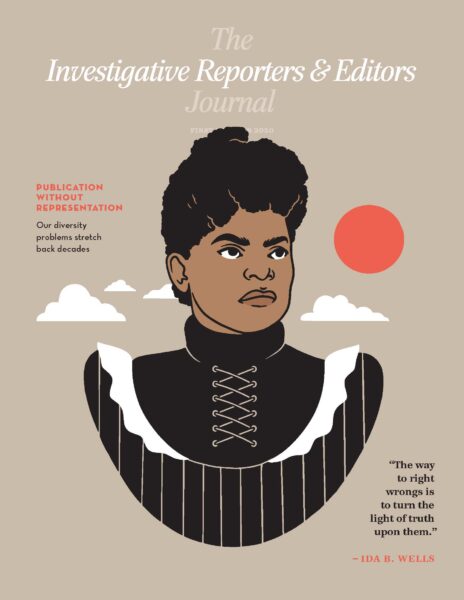
Despite DEI ‘Bright Spots,’ Investigative Units Lag
Traditional corporate newsroom managers have been unable “to establish a culture that mentors and recruits reporters of color into the investigative ranks in large numbers,” a task force of the National Association of Hispanic Journalists has found, but the Associated Press, ProPublica and the Center for Public Integrity stand out as “bright spots.”
“The task force sent a survey to 45 newsrooms and received responses from 22. Among the responding newsrooms, 60% of investigative news reporters are White, 13% Latino, 9% Black and less than 1% Indigenous. There was even less diversity among editors, with the survey showing that more than 75% of editors identify as White,” the task force said in its Dec. 27 announcement.
“One of the newsrooms that did respond was the Los Angeles Times, whose leadership met with the NAHJ Task Force in January 2022 when reporters of color made up one of six investigative team reporters, covering a metropolitan region where people of color are more than half the population. By September of that year, the LA Times announced it had added three reporters to diversify its investigative team.”
It also said, “Investigative journalism plays a crucial role in uncovering hidden truths, holding institutions accountable, and driving social change.
Task force members included Maria Carrillo, Monica Rhor, Norberto Santana Jr., Dianna Náñez, Kimbriell Kelly, Mc Nelly Torres, Marina Walker Guevara, Yvette Cabrera, Mercedes Vigón, Michelle Faust Raghavan, Adriana Chavira and Walter Smith Randolph. Members of affinity groups, such as the National Association of Black Journalists, were represented.
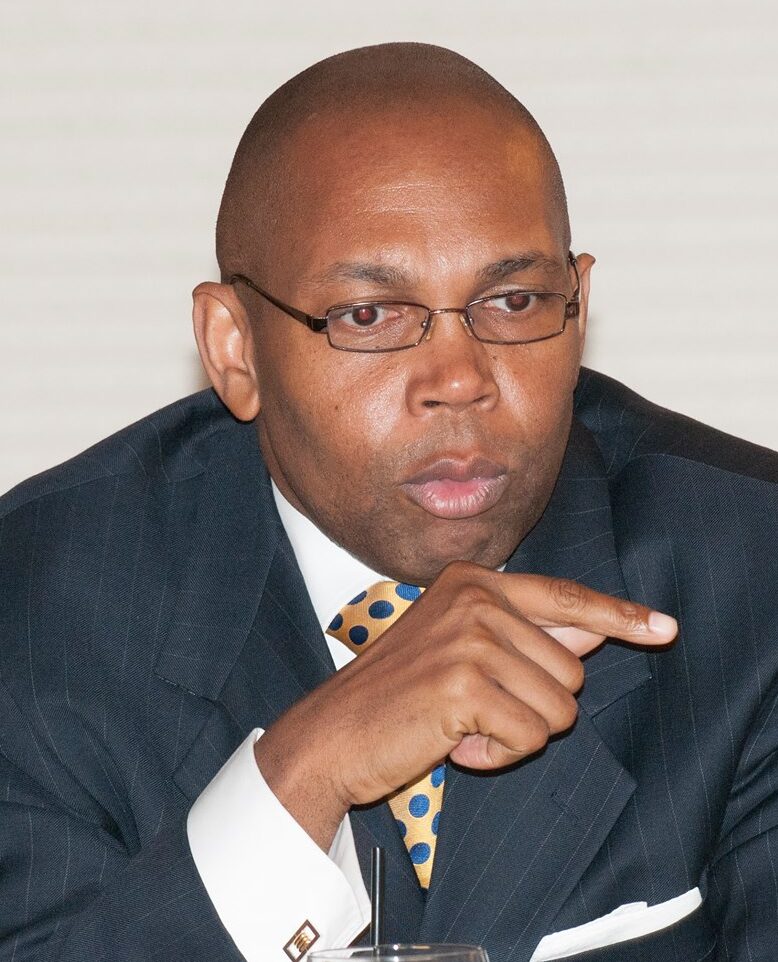 Of the “bright spots,” the report said that “After Ron Nixon (pictured) was hired as global investigative editor at the Associated Press in 2018, he brought the investigative team under one umbrella and cut a deal with editors in other departments to leverage talent with backgrounds in investigative reporting and bring them into the newsroom investigative program. These informal programs give reporters a chance to learn and get investigative experience. . . .”
Of the “bright spots,” the report said that “After Ron Nixon (pictured) was hired as global investigative editor at the Associated Press in 2018, he brought the investigative team under one umbrella and cut a deal with editors in other departments to leverage talent with backgrounds in investigative reporting and bring them into the newsroom investigative program. These informal programs give reporters a chance to learn and get investigative experience. . . .”
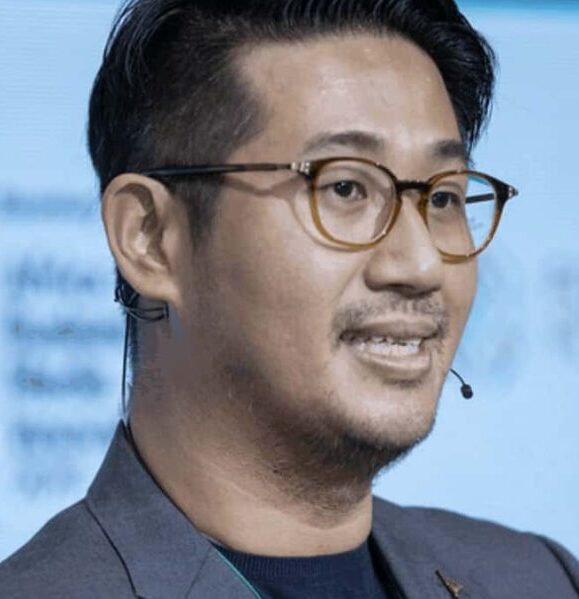 The Center for Public Integrity “had been led by White male CEOs and editors until Susan Smith Richardson became the first Black woman (and the first person of color) to lead the organization in 2019. Richardson set in motion changes in the organization, including shifting the focus to cover inequality. . . .” The CEO, Paul Cheung (pictured), is a past president of the Asian American Journalists Association; Cabrera, the current NAHJ president, is a senior reporter there; and Torres is an editor.
The Center for Public Integrity “had been led by White male CEOs and editors until Susan Smith Richardson became the first Black woman (and the first person of color) to lead the organization in 2019. Richardson set in motion changes in the organization, including shifting the focus to cover inequality. . . .” The CEO, Paul Cheung (pictured), is a past president of the Asian American Journalists Association; Cabrera, the current NAHJ president, is a senior reporter there; and Torres is an editor.
ProPublica, “one of the nation’s premier investigative newsrooms . . . faces a unique challenge finding talent
because it requires candidates to have at least five years of experience. That shuts out many journalists of color,
considering the lack of racial and ethnic diversity on most investigative journalism teams. Yet, out of eight managers hired this year, four are people of color. . . .”
After the survey was taken, investigative journalist Mark J. Rochester was named executive editor of the Sarasota (Fla.) Herald-Tribune, “with a focus on watchdog journalism,” Derek Gilliam reported Dec. 12 for the Gannett newspaper.
- Tyler Falk, Current: Center for Investigative Reporting will dissolve in merger with ‘Mother Jones’ (Dec. 18)
- Fund for Investigative Journalism: Call for Proposals: Stories on Threats to Democracy in the U.S.
- Investigative Reporters and Editors: The Chauncey Bailey Journalist of Color Investigative Reporting Fellowship
- Investigative Reporters and Editors: Third quarter 2023 edition of The IRE Journal explores Indigenous news [PDF]
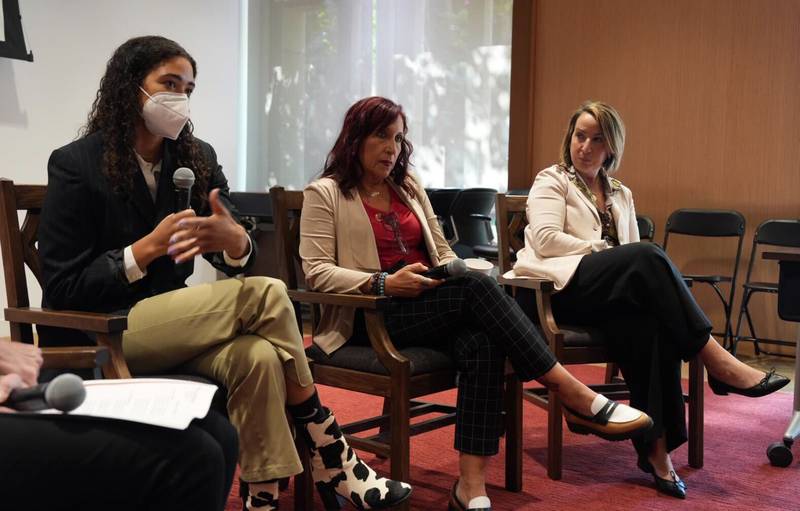
. . . Mc Nelly Torres, a V.P., Exits NAHJ Board
Mc Nelly Torres, vice president – digital of the National Association of Hispanic Journalists and before that a general at-large officer, has left the board, Torres announced Friday on social media.
“I’ve done my part as a volunteer for this organization. If you are interested in serving, contact the Board President
@YCabreraOC. Happy 2024!,” Torres wrote on X, formerly Twitter.
Torres is an investigative journalist and editor at the Center for Public Integrity, where she leads a team of reporters investigating inequality. For NAHJ, her Investigative and Data Reporting Task Force, which she co-chaired, released a study last month showing the lack of sufficient diversity among investigative reporters. [PDF]
“I served the board for 3.5 years and I’m proud of the work I’ve done and contributed to working with the membership and board members,” Torres messaged Journal-isms. “I get requests to participate in other spaces and continue the work that I love doing as a volunteer. It’s time to move on. New Year, new spaces where I can do meaningful work.”
Asked her biggest accomplishment, Torres replied, “Training. Helping to organize good training on investigative and data reporting during the year and at the [NAHJ annual] conference and all the work the Investigative and Data Journalism Task Force has done. Bringing members together to accomplish all that because we are stronger when we join forces and work together.”
She added, “One thing I’m proud of is to have been the person who pushed the Board to approve an Anti-Harassment Policy [PDF] which was badly needed. This was very important to me . . . proud that we accomplished that. “
Torres is a native of Puerto Rico. “Growing up on an island ravaged by corruption, social inequality and injustices opened my eyes at a young age. I learned that life is not fair. People with means buy friends in high places. Justice can be hard to come by,” she said last year. When honored by the International Women’s Media Foundation in 2022, Torres told the group, “This is a very racist industry, and now that I’m an editor in a newsroom I started last year, I’m not going to sit down and allow anybody to come and attack my reporters who are people of color.”
Torres was outspoken on the NAHJ board. In July, she called proposed guidelines for communications by board members “fascistic.” She said in 2022 that Facebook was “a threat to democracy” and urged NAHJ to reject Facebook money, and she told the board last summer how much she despised the term “minorities.” “I find it denigrating. You feel like you don’t belong, that your voice doesn’t matter, period,” Torres said. A previous board had already asked newsrooms to stop using the term.
She acknowledged that she had not expressed an opinion on NAHJ’s pullout from a planned joint conference with the National Association of Black Journalists in Chicago in 2024.
“But I will say this: I hope NAHJ and NABJ host a conference in the future,” Torres told Journal-isms. “It’s important that we come together to celebrate our achievements but also to learn from each other. I’ll be the first in line when that happens.”
Miguel Almaguer reports on the attack on House Speaker Nancy Pelosi’s husband, Paul, on Nov. 2, 2022. Two days later, Almaguer reported that Paul Pelosi gave police no indication he was in danger when he answered the door. In fact, San Francisco police said that Pelosi was struggling with the intruder, David DePape, when they first saw him, the Washington Post reported. Almaguer was suspended. (Credit: YouTube)
Reporter Miguel Almaguer Out at NBC News
“Reporter Miguel Almaguer, who famously mysteriously disappeared from NBC News for several weeks after his explosive Paul Pelosi report was retracted in 2022, has left the network,” Brian Flood reported Thursday for Fox News.
“On Nov. 4, 2022, Almaguer suggested in a report that aired on ‘Today’ that Pelosi, the husband of former House Speaker Nancy Pelosi, might not have been in immediate danger when police arrived the night he was assaulted in his San Francisco home. NBC News retracted the report that afternoon as it began to go viral, saying it didn’t meet standards.
“Almaguer, once a regular on ‘Today’ and ‘NBC Nightly News,’ was then absent until he quietly returned on Dec. 12, 2022. He was reportedly suspended, but NBC wouldn’t admit it on the record and Almaguer did not respond to multiple requests for comment during the prolonged absence. . . .”
Almaguer wrote Tuesday on Instagram, “Seen a lot. Done a lot. Learned a lot. Thankful for my nearly 2 decade long run at NBC News. But more than anything grateful for those in the trenches with me. With them it was more an adventure than work. Change is hard and goodbyes aren’t easy. But turning the page is exciting. In news … I love a great last line. This one is still being written.”
Oprah Winfrey, director Blitz Bazawule and the cast of “The Color Purple,” including Fantasia Barrino Taylor, Danielle Brooks, Taraji P. Henson, Phylicia Pearl Mpasi, Corey Hawkins and Colman Domingo appear last month on “The Jennifer Hudson Show.” (Credit: YouTube)
‘Color Purple’ Sales Fall, So Does Audience Diversity
“The end of the year brought a lackluster performance for the latest adaptation of ‘The Color Purple,’ a musical that blew audiences away when it opened on Christmas Day but then saw numbers dramatically fall as its theater run continues,” Mary Whitfill Roeloffs reported Monday for Forbes.
David Grove added for Movieweb, “The heavily front-loaded nature of the box office performance of The Color Purple is related to a pronounced lack of diversity within the demographic of the film’s audience, which has become very polarized, even though audiences of all demographics have expressed seemingly universal admiration for the movie along with surpassing the original 1985 film’s Rotten Tomatoes score.
“While approximately sixty-five percent of the film’s current audience is Black, according to Deadline, less than twenty percent of the audience is white, while Hispanic viewers only represent slightly more than ten percent of the film’s audience. In contrast, the Broadway musical on which the film is based became a hit on Broadway, where the musical debuted in 2005, precisely because its audience was virtually evenly divided between Black and white patrons, according to Today.. . . “
Critics and journalists had varying reactions to the film.
- Richard Brody, New Yorker: A Sense of Mystery and Wonder in a New “Color Purple” (Dec. 27)
- Robert Daniels, New York Times: ‘The Color Purple’ Tips Its Hat to Classic Black Musicals
- Candice Frederick, HuffPost: The Compromises Of ‘The Color Purple’ (Dec. 21)
- Vivian Kwarm, Daily News, New York: Oprah Winfrey reflects on ‘full circle’ journey with ‘The Color Purple’ and turning 70 (Dec. 15, updated Dec. 16)
- Candice McMillan, KOMO, Seattle: Review: Does the new ‘The Color Purple’ live up to the hype?
- Brooke Obie, Andscape: The latest adaptation of ‘The Color Purple’ strips away Celie’s powerful love story
- Brooke Obie, Jacqueline Coley and Candice Frederick, WAMU-FM, Washington: The 1A Movie Club sees ‘The Color Purple’
- Gloria Oladipo, Guardian: The latest adaptation of The Color Purple fails its lead character
- Ishmael Reed, Counterpunch: Harvey Weinstein and Steven Spielberg’s Black Men are “Soulless Monsters” (Dec. 29)
- Jordan Ruimy, worldofreel.com: Warner Bros “Overestimated” Weekend Numbers for ‘The Color Purple’ — $11 million 3-Day Total
- Alissa Wilkinson, New York Times: The Color Purple’ Review: Still Here (Dec. 19, updated Jan. 2)
Stockwell to Run Washington Post Local Coverage
 Jamie Stockwell (pictured), a Mexican-American who has worked at The New York Times and San Antonio Express-News and most recently as executive editor for Axios Local, is returning to The Washington Post, where she was once an intern and reporter, to oversee local coverage.
Jamie Stockwell (pictured), a Mexican-American who has worked at The New York Times and San Antonio Express-News and most recently as executive editor for Axios Local, is returning to The Washington Post, where she was once an intern and reporter, to oversee local coverage.
“Axios, which is headquartered in Arlington, hired Stockwell in early 2022 to expand its local operations and now has outposts in 30 cities and regions,” Andrew Beaujon reported Thursday for Washingtonian. “Stockwell was a Metro reporter at the Post before joining the San Antonio Express-News, where she rose to Metro editor and eventually managing editor. She then spent three years at the New York Times, where she was a deputy national editor overseeing coverage of Texas, the Southwest, the South, and its ‘Race/Related’ project.
“Post Local editor Mike Semel, who previously oversaw local coverage, was recently promoted to deputy managing editor. He’ll assume that role when Stockwell starts, a date Washingtonian was unable to immediately confirm.
“Stockwell will step into a coverage area that newsroom sources say was hit hard by the paper’s recent buyouts. . . . The thinning comes as several local stories have become big ‘talkers,’ including a record number of murders last year in the District of Columbia as well as the Wizards and Capitals’ plans to move to [the Virginia suburb of] Alexandria. . . .”
When Stockwell was named deputy National editor at the Times in 2018, Marc Lacey, then national editor, now a managing editor, wrote, “Jamie’s enthusiasm for journalism and for the digital transition the industry is undergoing is infectious. She’s done it all at The Express-News and is known as someone who searches every day for new ways to tell stories and grow readers across platforms. . . .
“Jamie is a South Texas native whose family has been in the area since the days when it was Mexican territory. Most of her ancestors are from Northern Mexico and she spent many summers and weekends at her grandparents’ cattle ranch.”
Stockwell is rejoining the Post after the news organization implemented a plan to eliminate 240 jobs through voluntary separation packages that left holes particularly in local news. Executive Editor Sally Buzbee told Journal-isms that the reporting of departed Metro columnists Courtland Milloy and John Kelly “helped create an ongoing dialogue with our readers that we are committed to maintaining, whether through columns or other formats that deepen our engagement with the Washington region.”
When Stockwell was named editor of the Times’ Race/Related project, Times editors noted that as managing editor of the Express-News, Stockwell “launched a number of newsletters and other ventures aimed at connecting with readers.”
Meanwhile, Post journalists Shannon Croom, Luz Lazo and Justin George joined others of color who took the buyout. More in updates to the Dec. 23 Journal-isms column.

Miami Herald Calls Cuba’s Revolution a Failure
“As 2024 dawns, we mark an anniversary that is especially difficult to stomach for many in Miami’s historic Cuban-exile community: The 65th anniversary of the Cuban Revolution,” the Miami Herald editorialized Dec. 30 under the headline, “The Cuban Revolution turns 65. It broke Cuba, but not its people.”
“It is, incredibly, the longest existing political revolution in the modern world, followed by the American, French, and Russian revolts, which were replaced by true democracies. Not Cuba’s, which turned out to be secretly Marxist-Leninist inspired.
“If it were a human, the revolution might be ambling into retirement. However, Cuba’s authoritarian government clings to the hollow glory of the revolution, even though it did little but condemn the island to isolationism, constant economic shortages and repression, sending 1 million Cubans into exile.
“With the revolution, Cuba has never enjoyed times of plenty. Still, it has managed to keep its people believing that they must sacrifice for the ‘good of the revolution,’ those who don’t are considered traitors — impressive psychological warfare on its populace.
” ‘The Cuban Revolution sought to crush Cuba’s vibrant economy to make Cubans controllable, and it did. This destructive process has turned Cuba into a land of poverty and need, a country unable to feed itself,’ Orlando Gutierrez Boronat, spokesperson for the Cuban Democratic Directorate and a member of the Assembly of the Cuban Resistance, told the Editorial Board.
“Ironically, the original promise of the revolution was to end poverty on the island by equalizing wealth. Now, most everyone is poor, all the buildings are decrepit and few have plenty. International figures show 88% of Cubans live at the poverty level, a jump of 13% from the previous figures.
“ ‘The Cuban Revolution is the greatest fraud ever committed against the Cuban people. It is an enduring crime,” Gutierrez Boronat said. He’s right. . . .”
Full editorial at the end of this column.
- Daniel Gonzalez, Arizona Republic: Cuban refugees have long been allowed into the US. What’s happening now? (March 6)
- Journal-isms: The Embargo Made Them Do It (Dec. 6)
- Leonardo M. Fernandez Otaño (El Toque), Havana Times: When Celebrating Christmas was a Crime in Cuba (Dec. 26, 2022)
- Anett Rios and Alien Fernandez, Reuters: Cuba’s Christmas not so merry this year as economic crisis grinds on (Dec. 6)
- Julio A Rojas, Journal-isms: An Independent Afro-Cuban Journalist’s Statement to the Journal-isms Roundtable (Dec. 2)
- Seth Freed Wessler, Pro Publica with The New York Times Magazine: When the Coast Guard Intercepts Unaccompanied Kids (Dec. 7)

N.Y. Times’ Lelyveld Remembered With Affection
Joseph Lelyveld, a former executive editor and foreign correspondent for The New York Times, was “for nearly four decades one of the most respected journalists in America, a globe-trotting adventurer who reported from Washington, Congo, India, Hong Kong, Johannesburg and London, winning acclaim for his prolific and perceptive articles,” Robert D. McFadden’s obituary in the Times said Friday.
Lelyveld won the 1986 Pulitzer Prize for nonfiction for his book “Move Your Shadow: South Africa, Black and White.”
He was executive editor from 1994 to 2001. The Times’ Pulitzer Prize-winning series, “How Race Is Lived in America,” was conceived and executed on his watch, running June 4 to July 16, 2000. Future managing editor Gerald M. Boyd, the first African American on the Times’ news masthead, would write, “Lelyveld was encouraging, promising us some of the paper’s best reporters, photographers, and editors once we had a solid idea.”
Lelyveld died at 86 of complications of Parkinson’s disease, according to Janny Scott, his partner of 19 years and a former Times reporter. The editor was remembered favorably by Black journalists who worked with him and messaged Journal-isms Saturday.
“He recruited me to The Times and mentored me throughout his time there,” said Dean Baquet, the Times’ first Black executive editor, holding the top newsroom job from May 2014 to June 2022. “I wouldn’t be here without him. He was a great editor and truly decent man.”
Marc Lacey, a managing editor, said, “He hired me in 1999 and sent me overseas as a foreign correspondent a couple years later. We had a tradition that new correspondents had lunch with the executive editor before they went overseas. I’ll never forget his words of wisdom as I left for Nairobi and how I finished my meal feeling like the luckiest journalist in the world.”
Paul Delaney, a retired senior editor, messaged, “he & i were good pals as well as colleagues. lived near each other on w side & had dinners together & parties often at each others’ pads. he & max [Frankel, executive editor from 1986 to 1994] were great supporters of my nyt career. they were responsible for push to integrate staff beyond tokenism, supporting my efforts by giving me unlimited budget to do so. that led to sevl great hires — including gerald boyd, cal sims, lena williams, jerry gray, tom morgan, bill rhoden, e.r. shipp, shawn kennedy, howard french, mary curtis, nat sheppard, judith cummings, reg thomas, et al. couldn’t have done it w/o him & max.”
In his 2003 memoir “City Room,” the late Times managing editor Arthur Gelb told the story of Lelyveld and Charlayne Hunter, now Charlayne Hunter-Gault, investigating the death of an 11-year-old Harlem boy from a heroin overdose. “Joe needed all the help he could get in talking with Harlem residents,” Gelb wrote, “so I agreed that Charlayne would assist him. They spent three weeks on the story, and the fruits of their collaboration appeared January 12, 1970, on page one, above a four-column photo taken of the boy by a friend in his Harlem neighborhood.
“Assembled from scores of interviews, some gathered at considerable risk from street addicts and narcotics pushers, the story ran almost a full page on the inside jump space.”
 Hunter-Gault, who worked at the Times from 1968 to 1978 and established the paper’s Harlem bureau, told Journal-isms, “It was so great working with Joe Lelyveld especially when we covered the tragic death of the youngest person to die of an overdose of heroin.” (Photo of Lelyveld and Hunter-Gault in 1970, credit New York Times)
Hunter-Gault, who worked at the Times from 1968 to 1978 and established the paper’s Harlem bureau, told Journal-isms, “It was so great working with Joe Lelyveld especially when we covered the tragic death of the youngest person to die of an overdose of heroin.” (Photo of Lelyveld and Hunter-Gault in 1970, credit New York Times)
“In doing so, Joe grasped the gravity of the psychoses affecting so many young Black people, without judging them. Rare in those days. And I was grateful to have had the opportunity to work with him in the challenging streets of Harlem, especially.”
Rachel Swarns (pictured, below), a professor at New York University who spent 22 years as a Times reporter and correspondent, has been celebrated for her investigations of institutional ties to slavery, particularly at Georgetown University.
Swarns took to Facebook after Lelyveld’s passing to discuss how her Times career began.
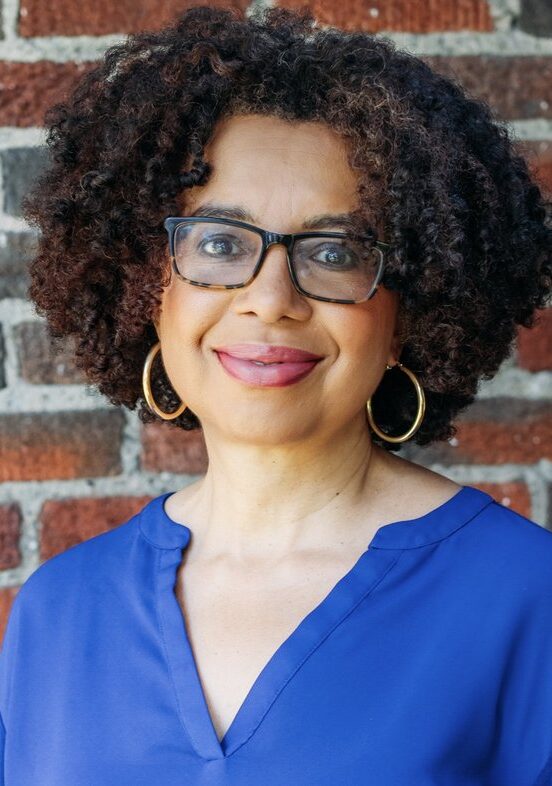 “I was a young reporter at the Miami Herald, just 27 years old when Joe Lelyveld hired me. I had covered stories in Haiti, Cuba, London and Northern Ireland by then and dreamed of working as a full-time foreign correspondent. Joe was cerebral, and yes, sometimes seemed inscrutable and painfully shy, but he cared so much about his reporters. He believed in me and he championed me and I will always be so grateful.
“I was a young reporter at the Miami Herald, just 27 years old when Joe Lelyveld hired me. I had covered stories in Haiti, Cuba, London and Northern Ireland by then and dreamed of working as a full-time foreign correspondent. Joe was cerebral, and yes, sometimes seemed inscrutable and painfully shy, but he cared so much about his reporters. He believed in me and he championed me and I will always be so grateful.
“Within my first three years at the paper, he sent me on reporting stints to Cuba and Russia. He came to our wedding (trekking to Staten Island!) He made me the Times’ first Black Johannesburg bureau chief, four years after the end of apartheid, and gave me a pair of binoculars to remind me to savor the beauty of the countries that I was covering.
“He retired before I came back home as a Washington correspondent, but I still heard from him from time to time. I had dinner with him and Janny right as I was getting started on my first book and he gave me great writing advice, advice that I still try to follow today. I still have a tattered copy of MOVE YOUR SHADOW on my bookshelf, his searing, Pulitzer Prize-winning book that exposed the brutality of the apartheid regime.
“He was a great editor, but he was also a great writer who wrote beautifully and powerfully about the people he met and the injustices he witnessed. And in retirement, he kept writing. Three more books! A memoir, a book about Gandhi’s time in South Africa, and a final book about FDR. Read more about him here — and you’ll see why we were all so very lucky to have worked for him.”
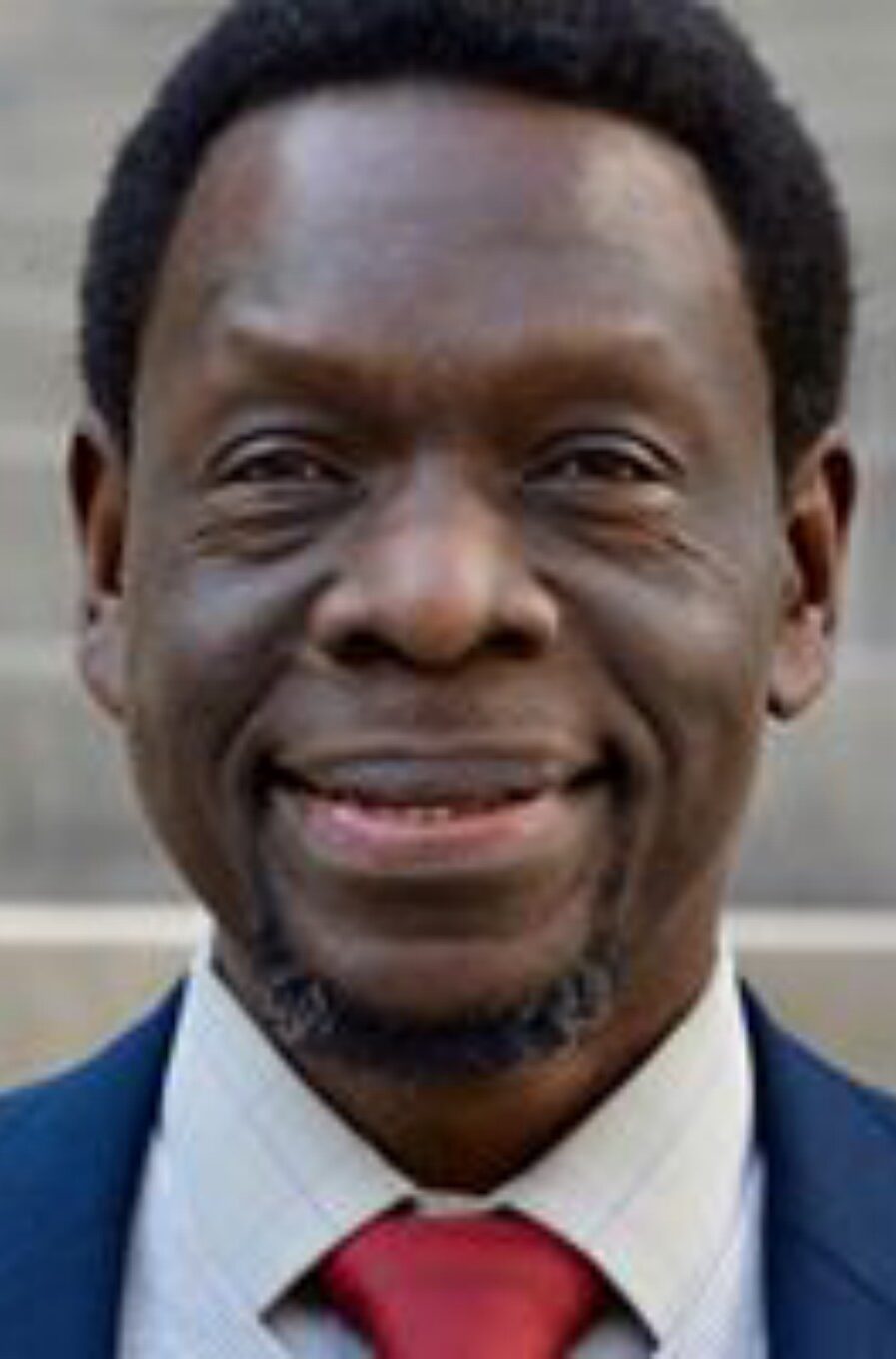 Milton Allimadi (pictured), editor and publisher of Black Star News in New York, worked at the Times only as metro news desk stringer, between 1993 and 1995. But he wrote about its Africa coverage, much of which he considered demeaning, in “Manufacturing Hate — How Africa Was Demonized in Western Media,” excerpted here.
Milton Allimadi (pictured), editor and publisher of Black Star News in New York, worked at the Times only as metro news desk stringer, between 1993 and 1995. But he wrote about its Africa coverage, much of which he considered demeaning, in “Manufacturing Hate — How Africa Was Demonized in Western Media,” excerpted here.
Yet Allimadi said he respected Lelyveld “tremendously.”.
“He treated Africa seriously as a journalist and an editor. I met Lelyveld in person at least three times,” Allimadi wrote Saturday.
“The first time was when he spoke at the Graduate School of Journalism at Columbia in 1992 when I was a student there. He was the Times managing editor. I was also familiar with his excellent 1985 book ‘Move Your Shadow’ about apartheid South Africa.
“My Master’s paper at Columbia critiqued the historical racist demonization of Africans in Western media. When I dug into the New York Times’ archives, I discovered that Lelyveld was one of the reporters who stood up for Africa in contrast to Pulitzer Prize-winning reporter Homer Bigart and foreign news editor Emanuel Freedman, a Polk Award honoree, both from the 1960s.
“When Lelyveld was a Times reporter in South Africa in the 1980s, he once wrote a series about the apartheid regime’s segregated education system and how it discriminated against Blacks by denying adequate funding to their schools. Yet, when the published version of one article was emasculated in the editing process, Lelyveld didn’t mince words in a protest letter to the foreign news desk dated Jan. 6, 1983.
“He complained that ‘virtually all the original reporting’ he’d conducted over a one-month period had been taken out. In one article, the subject of white control and the racial hierarchy in the education system was deleted, he complained. The printed version of his article was like ‘a salami sandwich without the salami, just slabs of stale bread,’ Lelyveld wrote, and added, to describe the edited version of his story, ‘…if you prefer a baseball image, the wind up without the pitch, in other words a balk.’ . . .”
Allimadi’s complete piece is at the end of this column.
- Journal-isms: N.Y. Times’ Siegal Paid Attention to Diversity (Sept. 24, 2022)
- Journal-isms: Punch “Saved the Summer Program” (Oct. 3, 2012)
- Journal-isms: The Joy and Pain of Being a First (on Gerald Boyd) (Dec. 2, 2006)
- Journal-isms: Abe Rosenthal, Politically Incorrect (May 11, 2006)
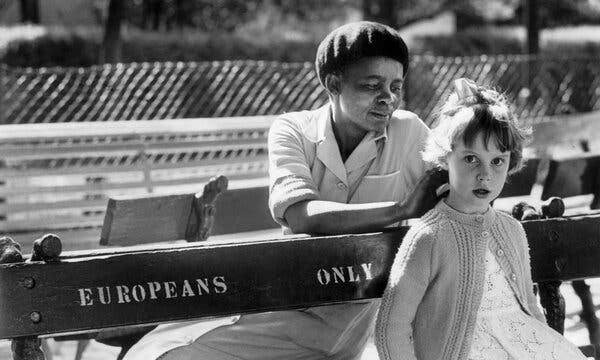
Passings: Cisneros, Dozier, Fields, Magubane, Rivers
 “Gustavo Cisneros (pictured), a businessman who expanded his family business into one of the biggest and most diversified holdings in Latin America in the late 20th century, has died at 78,” Denise Petski reported Tuesday for Deadline. “A cause of death was not reported. . . . Cisneros co-founded Univision, the first Spanish-language media company in the U.S., in 1992. Three years later, he launched DirecTV Latin America, the first all-digital direct-to-home satellite television service in Latin America. . . .”
“Gustavo Cisneros (pictured), a businessman who expanded his family business into one of the biggest and most diversified holdings in Latin America in the late 20th century, has died at 78,” Denise Petski reported Tuesday for Deadline. “A cause of death was not reported. . . . Cisneros co-founded Univision, the first Spanish-language media company in the U.S., in 1992. Three years later, he launched DirecTV Latin America, the first all-digital direct-to-home satellite television service in Latin America. . . .”
 Kirthmon F. Dozier Sr. (pictured), who photographed “thousands of professional, college and high school events and even multiple Olympics for the Detroit Free Press across 28 years, died Friday after a brief illness,” Neal Rubin wrote Sunday for the Free Press. Dozier was 65.
Kirthmon F. Dozier Sr. (pictured), who photographed “thousands of professional, college and high school events and even multiple Olympics for the Detroit Free Press across 28 years, died Friday after a brief illness,” Neal Rubin wrote Sunday for the Free Press. Dozier was 65.
Kirt Dozier Jr. said his dad was diagnosed with a pneumonia followed by the discovery of lung cancer in late December. “The expectation was that chemotherapy would begin once the pneumonia was defeated, but Dozier gave out first, an almost unprecedented setback for someone with a history of working through every problem,” Rubin wrote.
“J. Kyle Keener, a former Free Press chief photographer, described Dozier in more frenzied prose than his low-key friend ever used: ‘Just the kind of guy that you wanted in that photographic hot seat when the pressure cooker was turned up high and it was time to produce tremendous quality imagery under extreme deadline conditions.’ . . .”
 Raylena Church Fields (pictured), an Emmy Award-winning news producer who worked with Peter Jennings at ABC News and Dan Rather at CBS News, died of ovarian cancer Dec. 10 at her home in Salisbury, Md., her son, Bradley Fields, told Journal-isms. She was 70. “In lieu of a funeral, a memorial service celebrating Raylena’s life will happen in early 2024,” the family said. “In the meantime, rather than send flowers, the family asks that donations be made to the National Association of Black Journalists in honor of her incredible life.”
Raylena Church Fields (pictured), an Emmy Award-winning news producer who worked with Peter Jennings at ABC News and Dan Rather at CBS News, died of ovarian cancer Dec. 10 at her home in Salisbury, Md., her son, Bradley Fields, told Journal-isms. She was 70. “In lieu of a funeral, a memorial service celebrating Raylena’s life will happen in early 2024,” the family said. “In the meantime, rather than send flowers, the family asks that donations be made to the National Association of Black Journalists in honor of her incredible life.”
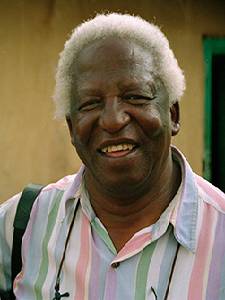 “Peter Magubane (pictured), a Black South African photographer whose images documenting the cruelties and violence of apartheid drew global acclaim but punishment at home, including beatings, imprisonment and 586 consecutive days of solitary confinement, died on Monday,” Alan Cowell wrote Monday for The New York Times. “He was 91.
“Peter Magubane (pictured), a Black South African photographer whose images documenting the cruelties and violence of apartheid drew global acclaim but punishment at home, including beatings, imprisonment and 586 consecutive days of solitary confinement, died on Monday,” Alan Cowell wrote Monday for The New York Times. “He was 91.
“His death was confirmed by family members speaking to South African television news broadcasts. No other details were provided.
“Such were the challenges and perils facing Black photographers in South Africa’s apartheid-era segregated townships, Mr. Magubane liked to say, that he took to hiding his camera in hollowed-out bread loaves, empty milk cartons or even the Bible, enabling him to shoot pictures clandestinely. . . .”
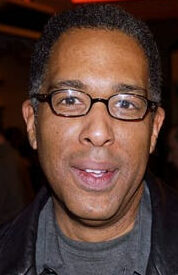 “Bobby Rivers (pictured), an affable and playful television host, entertainment reporter and film critic, died on Tuesday in Minneapolis. He was 70,” Victor Mather reported Dec. 29, updated Dec. 31, for The New York Times. “The cause was complications of cancer, said his brother, Tony. He died in a hospital.
“Bobby Rivers (pictured), an affable and playful television host, entertainment reporter and film critic, died on Tuesday in Minneapolis. He was 70,” Victor Mather reported Dec. 29, updated Dec. 31, for The New York Times. “The cause was complications of cancer, said his brother, Tony. He died in a hospital.
“Bobby Rivers got his start on television on ‘Good Morning Milwaukee’ in 1979. … He moved to national TV in the early days of the VH1 cable music channel, where he had his own talk show, ‘Watch Bobby Rivers.’
“In the 1990s he became an entertainment reporter for local stations in New York, appearing on ‘Weekend Today in New York’ on WNBC and ‘Good Day New York’ on WNYW.
“In the 2000s, he hosted ‘Top 5,’ a food-oriented variation on Top 40 countdown shows, on the Food Network. He also worked on radio and as a film critic on ‘Lifetime Live.’ ”
Drake Bentley wrote Dec. 28, updated Dec. 29, for the Milwaukee Journal Sentinel, “Gino Salomone, longtime local entertainment reporter . . . said Bobby Rivers would grow frustrated with media executives. . . . ‘He was one of the most talented people but people didn’t know what to do with him. He grew frustrated with agents and news directors, you know, a Black gay man was not something they knew what to do with. And it’s just a shame because he was so fast and so entertaining. And quick and accurate. . . .”
His sister, Betsy Rivers, has created a GoFundMe page to pay his medical bills and his cremation.
Short Takes
- “The killings of journalists Hamza Al Dahdouh, who is the son of Al-Jazeera Gaza bureau chief Wael Al Dahdouh, and freelancer Mustafa Thuraya must be investigated to determine whether they were targeted, the Committee to Protect Journalists urged on Sunday. “The killings of journalists Hamza Al Dahdouh and Mustafa Thuraya must be independently investigated, and those behind their deaths must be held accountable. The continuous killings of journalists and their family members by Israeli army fire must end: journalists are civilians, not targets,” said CPJ’s Middle East and North Africa Program Coordinator Sherif Mansour. . . .”
- The Israel-Hamas war ‘has forced managers to balance traditional norms of neutrality with the needs of staff tasked to uphold that image,” Ayodeji Rotinwa wrote Dec. 20 for Columbia Journalism Review. “It has also put freelancers in a precarious position, presenting questions about the extent to which news organizations can control people who are paid piecemeal and are not offered benefits. Adding to the tension: the war has been deadly for journalists, particularly those in Gaza. More than sixty journalists and media workers, most of them Palestinians, have been killed, according to the Committee to Protect Journalists. Arab journalists say they have borne the brunt of this moment. . . .” As of January 7, 2024, CPJ’s preliminary investigations showed at least 79 journalists and media workers were among the more than 23,000 killed since the war began on October 7—with more than 22,000 Palestinian deaths in Gaza and the West Bank and 1,200 deaths in Israel.
- “The Pivot Fund will map the news landscape of the Great Lakes states with support from the Joyce and McKnight Foundations, both founding members of the Press Forward local news initiative,” the fund announced Tuesday. “McKnight and Joyce are founding members of Press Forward, the national initiative that has pledged to invest $500 million in five years to reinvigorate communities by supporting local news.” The Pivot Fund’s Georgia research showed that rural communities and communities of color largely mistrusted legacy news outlets, which for years ignored them or covered them only in connection with crime . . . . The Pivot Fund starts by asking communities what sources they trust for news and information, no matter the platform, and then verifies that they adhere to journalistic ethics and standards. . . .”
- “MSNBC anchor Jonathan Capehart fought back tears and was forced to pull out a tissue during a segment on the three-year anniversary of the Jan. 6, 2021 storming of the Capitol,” Ryan King reported Sunday for the New York Post. “Capehart was interviewing former Capitol Police officer Michael Fanone, who penned a book on the ransacking of the Capitol, when he became visibly overcome with emotions. ‘Michael Fanone, I’m going to try to get through this – um, thank you for what you did three years ago today,’ Capehart said as he choked up, ‘Please, tell me your thoughts on this third anniversary. ” Capehart is also a columnist and associate editor on the Washington Post opinion pages.
- “Right-wing media forces have worked overtime to wash [former president Donald] Trump’s hands clean of the role he played in inciting the mob to storm the U.S. Capitol,” Oliver Darcy wrote Thursday for CNN’s “Reliable Sources” newsletter.” MAGA extremists such as Tucker Carlson have repeatedly promoted the false and reprehensible fantasy that the attack the country witnessed live on national television was a so-called ‘false flag’ event perpetrated by the ‘deep state.’ . . . A poll released on Thursday by The Washington Post and University of Maryland found that a staggering 39% of Americans who identified Fox News as their primary news source believed the FBI organized and encouraged the January 6 attack. The same poll found that 44% of Trump voters believed that falsehood.”
- “The Federal Communications Commission dashed the hopes of TV and radio ownership groups that wanted the commission to loosen ownership restrictions,” Al Tompkins wrote Dec. 27 for the Poynter Institute. “But on Wednesday, in a long-awaited decision, the FCC rejected the broadcasters’ call for deregulation and said they should embrace ‘public service’ over profitability.”
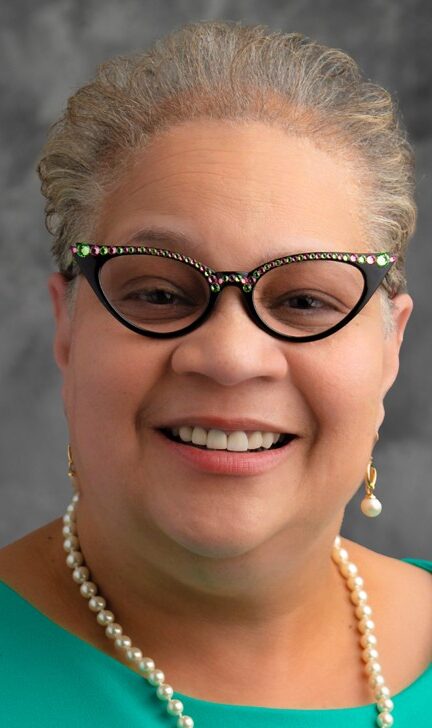 “Mike Shearer, 54, editor and market leader for the Akron Beacon Journal, has been named the new executive editor of The Columbus [Ohio] Dispatch, capping a months-long search to replace Edwina Blackwell Clark (pictured),” Mark Williams reported Dec, 21 for the Dispatch. Clark, who became the first woman an person of color to lead the paper in its nearly 151-year history, told Journal-isms she left the paper in November. “The path was sometimes rocky, coming at a time when the Dispatch and parent company Gannett have struggled with cuts and staff departures,” matternews.org reported Oct. 10. “In May, Poynter reported that eight high-ranking editors or executives had left Gannett in the six months prior. And in June, journalists from the chain staged a one-day strike during the media company’s annual shareholder meeting.”
“Mike Shearer, 54, editor and market leader for the Akron Beacon Journal, has been named the new executive editor of The Columbus [Ohio] Dispatch, capping a months-long search to replace Edwina Blackwell Clark (pictured),” Mark Williams reported Dec, 21 for the Dispatch. Clark, who became the first woman an person of color to lead the paper in its nearly 151-year history, told Journal-isms she left the paper in November. “The path was sometimes rocky, coming at a time when the Dispatch and parent company Gannett have struggled with cuts and staff departures,” matternews.org reported Oct. 10. “In May, Poynter reported that eight high-ranking editors or executives had left Gannett in the six months prior. And in June, journalists from the chain staged a one-day strike during the media company’s annual shareholder meeting.”
- “American museums and universities repatriated more ancestral remains and sacred objects to tribal nations this year than at any point in the past three decades, transferring ownership of an estimated 18,800 Native American ancestors, institutions reported,” Logan Jaffe, Ash Ngu and Mary Hudetz reported Dec. 26 for ProPublica. “The increase follows a ProPublica investigation that revealed how institutions have for decades failed to fully comply with [the federal Native American Graves Protection and Repatriation Act], in some cases exploiting a loophole that allowed them to keep the remains by denying their connections to present-day Indigenous communities. And some institutions, including Harvard University, pursued destructive scientific studies on those remains without the informed consent of descendants. . . .”
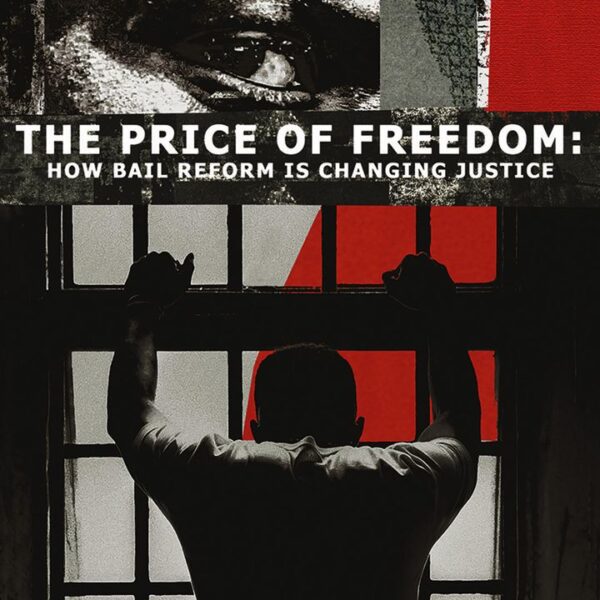
- “In the U.S., when someone is charged with a crime, judges often have the power to set them free while they await trial or have them held if they fear they will not return to court,” the New York Amsterdam News said in introducing a podcast series that is part of its “Beyond the Barrel of a Gun” initiative. “But for centuries a third option has existed: bail. Nearly 20% of those held at Rikers [Island prison] have been there between six months and one year; 14% have been held one to two years, and 8% (or nearly 500 people), have been detained at Rikers for more than two years.”
- “The Biden-Harris administration will not announce a decision to ban menthol cigarettes and flavored tobacco until March 2024 or later. The administration says it will continue meeting with groups in the coming months to understand more about the unintended consequences of the ban,” the National Newspaper Publishers Association, representing the Black press, reported Dec. 15. Benjamin F. Chavis Jr., NNPA president and CEO, told CNN, “A ban is not the answer; we need more education and treatment facilities to reduce smoking. To target the product preferred by the African American and Latino community is going to cause disparities.” NNPA has received thousands of dollars from the tobacco industry, but Chavis has said, “this is not about money,” but about unintended consequences.”
- “Historians have generally assumed that the transatlantic slave trade ended in 1867, but it actually continued into the following decade, according to new research,” Dalya Alberge reported Thursday for the Guardian. “Recently digitised newspapers of the 19th century had been particularly revealing, she said: ‘Historians haven’t easily been able to consult those sources before, which is one reason why I was able to find so much.’ The research will feature in her forthcoming book, Survivors: The Lost Stories of the Last Captives of the Atlantic Slave Trade. . . .” The Guardian is devoting more resources to reporting on slavery after research linked the founders of the Manchester Guardian, which later became The Guardian, with the transatlantic slave trade.
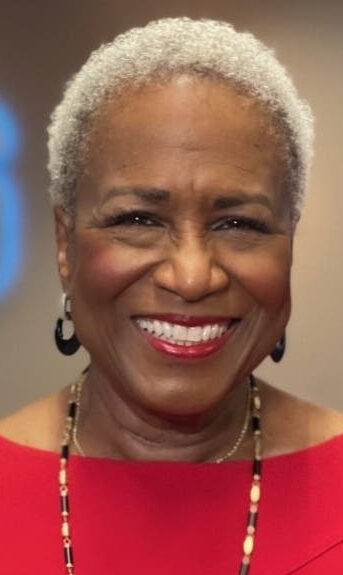 “After 48 years in TV and radio in Atlanta, I am coming to work for the AJC with ‘The Monica Pearson Show’ and a column — and a dream come true,” Pearson (pictured) wrote Wednesday for the Atlanta Journal-Constitution. “This new collaboration with the AJC allows me to use my skills from television and newspaper reporting to entertain, educate and engage with readers on a weekly basis. It’s also a full circle moment for me. I am working for a family-owned newspaper again. . . .”
“After 48 years in TV and radio in Atlanta, I am coming to work for the AJC with ‘The Monica Pearson Show’ and a column — and a dream come true,” Pearson (pictured) wrote Wednesday for the Atlanta Journal-Constitution. “This new collaboration with the AJC allows me to use my skills from television and newspaper reporting to entertain, educate and engage with readers on a weekly basis. It’s also a full circle moment for me. I am working for a family-owned newspaper again. . . .”
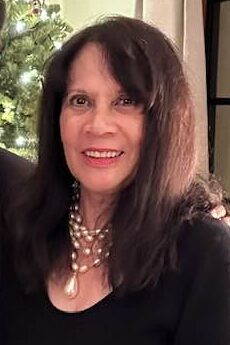 The International Women’s Media Foundation announced Karen Grigsby Bates (pictured) as its 2023 IWMF Gwen Ifill Award recipient, “recognizing her talent nurturing diversity, equity, and inclusion in broadcast news,” the group said Dec. 27. “Across more than two decades as a senior correspondent and host at National Public Radio (NPR), and as a founding member of NPR’s Code Switch, Bates worked deliberately to bring stories of Black women and marginalized communities to the fore, creating a legacy that many young journalists now follow. Bates was let go in March after 21 years at the network in NPR’s largest layoff since the 2008 recession.
The International Women’s Media Foundation announced Karen Grigsby Bates (pictured) as its 2023 IWMF Gwen Ifill Award recipient, “recognizing her talent nurturing diversity, equity, and inclusion in broadcast news,” the group said Dec. 27. “Across more than two decades as a senior correspondent and host at National Public Radio (NPR), and as a founding member of NPR’s Code Switch, Bates worked deliberately to bring stories of Black women and marginalized communities to the fore, creating a legacy that many young journalists now follow. Bates was let go in March after 21 years at the network in NPR’s largest layoff since the 2008 recession.

- Washington Post columnist Eugene Robinson paid tribute to the artistry of his wife, Avis Collins Robinson, who died Oct. 28 after a sudden and brief battle with cancer, describing her final piece-in-progress, “Winter,” to be accompanied by an essay. “Avis didn’t tell me if she intended to begin with a childhood memory or a little-known fact of American history, as in the other pieces she wrote. My guess is that she might have opened with a reminiscence of sledding down the long, gentle hill in her family’s backyard with her sister and brothers, and trying not to crash into the creek at the bottom. She did say, though, that she wanted this final piece to be upbeat. And she wanted to explain how much this project had meant to her. She took ‘Sewing the Seasons’ as a challenge to grow as an artist — and an opportunity to situate her art in the broader context of African American history, culture and tradition. Avis would have ended, I am sure, by expressing her gratitude for the chance to do work she found deeply fulfilling.”
- “Shaquille O’Neal is expanding his reach into the digital audio realm with the launch of The Big Podcast Network, in collaboration Playmaker HQ,” Radio Ink reported Dec.. 27. “The new venture aims to be a creative haven for athletes and content creators in sports, business, and entertainment. . . .”
- The International Press Institute said Dec. 25 it welcomes a decision by the Parliament in South Africa to repeal the offense of criminal defamation. The bill now awaits presidential assent. Antonio Zappulla and Joel Simon wrote in May for Columbia Journalism Review: “In the last five years, an alarming number of countries have introduced or amended laws to silence a free press. According to UNESCO, at least 160 currently have criminal defamation laws – used to threaten journalists with arrest, detention, expensive trials, fines and imprisonment, should their scrutiny stray into uncomfortable territory.”
- As the Democratic Republic of Congo held nationwide elections Dec. 20, “supporters of the Union for Democracy and Social Progress (UDPS) political party — which is led by current president Felix Tshisekedi — punched, dragged, and threw” Pascal Mulegwa, a correspondent for the French broadcaster Radio France International into a gutter, according to media reports and Mulegwa, who spoke to the Committee to Protect Journalists. Mulegwa said his attackers, some of whom were armed with knives, angrily accused him of working for a French outlet that was critical of Tshisekedi, CPJ reported Dec. 22.
- “For more than a month, Panama was embroiled in anti-mining protests that left at least four dead,” Katherine Pennacchio and André Duchiade reported Dec. 12 for LatAm Journalism Review. “They started on Oct. 19 and involved a mining contract between the Panamanian State and Minera Panamá, a subsidiary of Canada’s First Quantum Minerals, for the development of the largest open-pit copper mine in Central America for 40 years. Journalists covering the events reported use of force and attacks by protesters and police. “Experts point to dissatisfaction from both groups concerning how the mobilizations and the subsequent attempts to control it were being covered by media. . . .On Oct. 19, as protesters were mobilizing against the contract, freelance photographer and environmentalist Aubrey Baxter was documenting events in front of the National Assembly. He told LJR that, all of a sudden, he was hit with various pepper balls, one of which hit just below his right eye. The photographer said he received no help from the police. He eventually lost sight in that eye. “
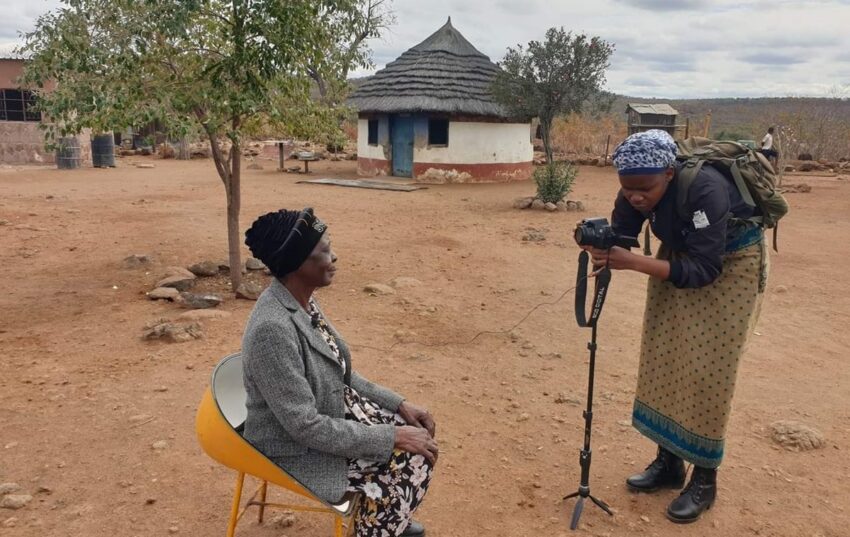
- “Zimbabwe’s media is divided along partisan lines, with the largest dailies closely controlled by the government. Disinformation spreads easily in the resulting confusion, and debunking it is particularly challenging in rural areas with few local media and limited internet access,” Catherine Edwards reported Dec. 12 for the International Press Institute. “Reaching marginalized audiences in Zimbabwe, including the nine in ten who live in rural areas and the two thirds who do not use the internet, is essential to strengthening civic participation. This engagement must happen before, during and after key moments like elections. Two young Zimbabwean media outlets have found a way to build ties with these groups that builds trust and identifies overlooked stories, using citizen journalism, and they already have examples of their reporting spurring change. . . .”
- “Guinean authorities should immediately end broadcasting blocks on at least four radio and television outlets and restore access to all social media and online communication platforms, the Committee to Protect Journalists said Dec. 15. Editor Sekou Bah of the privately owned Fim and Kalil Oularé, manager of the Djoma Média press group, “told CPJ that they could not point to specific reports that might have triggered the blocks and suspensions, but they believed their generally critical coverage of authorities played a role. ‘This is a programmed extinction of a medium known for its editorial line’ and its critical coverage, including of injustices and human rights violations, Bah said.

‘The Cuban Revolution turns 65. It broke Cuba, but not its people’
By the Miami Herald Editorial Board, Dec. 23, 2023 (behind a paywall)
As 2024 dawns, we mark an anniversary that is especially difficult to stomach for many in Miami’s historic Cuban-exile community: The 65th anniversary of the Cuban Revolution.
It is, incredibly, the longest existing political revolution in the modern world, followed by the American, French, and Russian revolts, which were replaced by true democracies. Not Cuba’s, which turned out to be secretly Marxist-Leninist inspired.
If it were a human, the revolution might be ambling into retirement. However, Cuba’s authoritarian government clings to the hollow glory of the revolution, even though it did little but condemn the island to isolationism, constant economic shortages and repression, sending 1 million Cubans into exile.
With the revolution, Cuba has never enjoyed times of plenty. Still, it has managed to keep its people believing that they must sacrifice for the “good of the revolution,” those who don’t are considered traitors — impressive psychological warfare on its populace.
ONCE VIBRANT
“The Cuban Revolution sought to crush Cuba’s vibrant economy to make Cubans controllable, and it did. This destructive process has turned Cuba into a land of poverty and need, a country unable to feed itself,” Orlando Gutierrez Boronat, spokesperson for the Cuban Democratic Directorate and a member of the Assembly of the Cuban Resistance, told the Editorial Board.
Ironically, the original promise of the revolution was to end poverty on the island by equalizing wealth. Now, most everyone is poor, all the buildings are decrepit and few have plenty. International figures show 88% of Cubans live at the poverty level, a jump of 13% from the previous figures.
“The Cuban Revolution is the greatest fraud ever committed against the Cuban people. It is an enduring crime,” Gutierrez Boronat said. He’s right.
So could the revolution celebrate another birthday? We hope not., though it has shown staying power.
Most of the bearded, fatigue-wearing rebels that rolled into Havana from the countryside in the first days of 1959 are dead.
Alive from the original group are rebels Raul Castro, 92, and Ramiro Valdes, 91, who were part of the group that led strongman Fulgencio Batista and his men to leave the palace and jump on private planes to go into exile on New Year’s Eve, 1958.
Six decades later, can the Cuban government keep the idea and promise it continues to sell to the Cuban people afloat?
SPEAKING OUT
Deep cracks are showing. Young Cubans seem less enamored of an event that happened long before they were born and are more outspoken about their unhappiness with the country than their parents ever were. They want a better life, and Miami remains a beacon of light.
“Are there cracks in the system? Definitely, the cracks are generated by the resistance of the Cuban people, on the island and in exile,” Gutierrez Boronat added.
And Cubans are still fleeing, as they have since the revolution’s inception. In the past two years alone, 425,000 Cubans have migrated to the United States, more than during any previous exodus. That’s sobering, and telling.
Capitalism, a dirty word on the island, is creeping in with permission from the government. Cuban entrepreneurs are being allowed to purchase food and goods from the outside world and resell them to Cubans for profit they can keep.
Another failure of the revolution is that politically, the revolution did not spread, as the rebels had hoped, to destroy the “imperialist Yankees” Fidel Castro hated so much.
“The Cuban Revolution is a beacon of light for all of Latin America,” said Ernesto “Che” Guevara, an Argentine who became an architect of the revolution along with Castro. Guevara was wrong then, and wrong now.
Not until recently have Latin American countries democratically elected left-leaning presidents — so many years after Cuba’s example.
One thing the revolution did as the 1950s were ending was tragically and dramatically alter the course of life for 11 million Cubans, separate families, execute Cubans considered enemies — not to mention impact U.S. politics, the city of Miami and the entire hemisphere itself.
For those in exile, we mark the anniversary with heavy hearts about lives irrevocably interrupted by a revolution they never believed would last this long.
Joseph Lelyveld and his partner, Janny Scott, interviewed each other in 2012 about research, reporting and the trials of writing a historic book in a session at New York’s fabled Strand book store. Top of mind were Lelyveld’s books “Move Your Shadow: South Africa, Black and White” and “Great Soul: Mahatma Gandhi and his Struggle With India.” (Credit: YouTube)
Not Ooga-booga Journalism: Joseph Lelyveld Stood Up for Africa at The New York Times
By Milton Allimadi
I respected former Times reporter, managing editor, and then executive editor Joseph Lelyveld, who died on Jan. 5, 2024 at age 86, tremendously.
He treated Africa seriously as a journalist and an editor. I met Lelyveld in person at least three times.
The first time was when he spoke at the Graduate School of Journalism at Columbia in 1992 when I was a student there. He was the Times managing editor. I was also familiar with his excellent 1985 book “Move Your Shadow” about apartheid South Africa.
My master’s paper at Columbia critiqued the historical racist demonization of Africans in Western media. When I dug into the New York Times’ archives, I discovered that Lelyveld was one of the reporters who stood up for Africa in contrast to Pulitzer Prize-winning reporter Homer Bigart and foreign news editor Emanuel Freedman, a Polk Award honoree, both from the 1960s.
When Lelyveld was a Times reporter in South Africa in the 1980s, he once wrote a series about the apartheid regime’s segregated education system and how it discriminated against Blacks by denying adequate funding to their schools. Yet, when the published version of one article was emasculated in the editing process, Lelyveld didn’t mince words in a protest letter to the foreign news desk dated Jan. 6, 1983.
He complained that “virtually all the original reporting” he’d conducted over a one-month period had been taken out. In one article, the subject of white control and the racial hierarchy in the education system was deleted, he complained. The printed version of his article was like “a salami sandwich without the salami, just slabs of stale bread,” Lelyveld wrote, and added, to describe the edited version of his story, “…if you prefer a baseball image, the wind up without the pitch, in other words a balk.”
Before Lelyveld’s era, another New York Times reporter who stood up for Africa was Lloyd M. Garrison, a descendent of William Lloyd Garrison, the famous 19th century abolitionist. Garrison covered the Biafran war of secession from Nigeria in the 1960s. One day, he made a startling discovery when he read one of his articles when it was published on May 31, 1967. The editors, sitting here in New York, had inserted a reference to “small pagan tribes dressed in leaves,” that Garrison had reportedly encountered — but had not —i n Nigeria. In other words, these pagan Africans were manufactured from thin air and included in Garrison’s article, presumably to give it a “tribal” flavor.
In a letter dated June 5, 1967, Garrison complained that the derogative terms “tribes” and “tribesmen” had been inserted in his articles in the past. “Tribesmen connote the grass-leaves image,” Garrison wrote. “Plus, the word ‘tribes’ equals primitive, which in a country like Nigeria just doesn’t fit, and is offensive to African readers who know damn well what unwashed American and European readers think when they stumble on the word,” he complained.
 On the other hand, when the Times sent celebrated reporter Bigart (pictured) to Africa in December 1959 to cover decolonization, he triumphantly declared his disdain for his assignment and the Africans he was to write about. “I’m afraid I cannot work up any enthusiasm for the emerging republics,” Bigart wrote in an undated letter to foreign news editor Freedman. “The politicians are either crooks or mystics. [Ghana’s leader] Dr. [Kwame] Nkrumah is a Henry Wallace in burnt cork. I vastly prefer the primitive bush people. After all, cannibalism may be the logical antidote to this population explosion everyone talks about.”
On the other hand, when the Times sent celebrated reporter Bigart (pictured) to Africa in December 1959 to cover decolonization, he triumphantly declared his disdain for his assignment and the Africans he was to write about. “I’m afraid I cannot work up any enthusiasm for the emerging republics,” Bigart wrote in an undated letter to foreign news editor Freedman. “The politicians are either crooks or mystics. [Ghana’s leader] Dr. [Kwame] Nkrumah is a Henry Wallace in burnt cork. I vastly prefer the primitive bush people. After all, cannibalism may be the logical antidote to this population explosion everyone talks about.”
Typical of the prose that Bigart and Freedman favored was an article about a reported incident of communal violence, published on January 31, 1960, in the Times, under the headline, “Barbarian Cult Feared in Nigeria.”
Bigart wrote in his lead sentence that, “A pocket of barbarism still exists in eastern Nigeria, despite some success by the regional government in extending a crust of civilization over the tribe of the pagan Izi.”
He added, “A momentary lapse into cannibalism marked the closing days of 1959, when two men killed in a tribal clash were partly consumed by enemies in the Cross River country below Obubra. Garroting was the society’s favored method of execution. None of the victims was eaten, at least not by society members. Less lurid but equally effective ways were found to dispose of them. According to the police, about twenty-six were weighed with stones and timber and thrown into flooded rivers. No trace has been found of these bodies. A few were buried in ant heaps. But most became human fertilizer for the yam crops.”
Bigart’s article claimed there had been a “momentary lapse into cannibalism,” and yet the same story also reported that none “of the victims had been eaten.”
Freedman, evidently, was delighted by this type of “journalism.”
“This is just a note to say hello and to tell you how much your peerless prose from the badlands is continuing to give us and your public,” he wrote to Bigart, in a letter dated March 4, 1960. “By now you must be American journalism’s leading expert on sorcery, witchcraft, cannibalism and all the other exotic phenomena indigenous to darkest Africa. All this and nationalism too! Where else but in The New York Times can you get all this for a nickel?”
As part of my master’s paper project I also got to interview some Times reporters, editors and former reporters. When I interviewed the late Michael T. Kaufman, a former correspondent who’d been based in East Africa in the 1970s, he was the Times deputy foreign editor and he made a startling revelation. Kaufman told me that while he was based in Kenya, he favored two types of approaches to African coverage: a thematic style, with articles that were relevant across national borders, and “ooga-booga” journalism.
“Milton Allimadi on Mass Media’s Control of the News, Hidden History, Neo-Colonialism” (Credit: YouTube)
“When I was growing up and Tarzan was about to attack Africans, they would make him speak his fake African, ‘ooga-booga, ooga-booga,’” Kaufman, said. “That’s what I call ooga-booga reporting. It is the National Geographic approach. It captures the thing that is unique to the place. Ooga-booga stories are titillating. I enjoyed them, as did the readers too,” he said. “Basically, there were two ways of covering Africa,” Kaufman continued: “’Look, they’re just like us,’ or ‘Look, they’re completely different.’ So you waver between the two. When writing about places like Nairobi, with its tall, modern buildings, you can’t forget the Maasai, walking in their robes.”
When I completed my master’s paper at Columbia, titled “Darkest Times In Africa,” Columbia Journalism Review (CJR) agreed to publish it, then chickened out. So I did CJR a favor and sent a copy of my paper to then Times publisher Arthur Ochs Sulzberger in October 1992. Lelyveld wrote me a letter on Sulzberger’s behalf. He conceded that my research had unearthed New York Times articles with “crude and ugly” language about Africans; he also added that much had improved since the 1960s, which was true.
After graduation from Columbia, I kept in touch with Lelyveld. I met him once in his office at the Times and we discussed the prospect of me working in East Africa as a stringer with then Times correspondent Donatella Lorch, but I never went. (I later worked for a few years as a New York Times metro news stringer).
The third time was when I bumped into Lelyveld on the subway train; coincidentally, I was reading “Move Your Shadow” again so I pulled it out and he autographed my copy for me. Through the years, we continued to exchange letters when Lelyveld was managing editor and later executive editor. I felt he took my critique of the use of the words “tribe” and “tribesmen” to describe Africans seriously. Through the years I noticed that these words were phased out and are rarely used today.
Lelyveld once explained why he felt sometimes change was slow in journalism. The problem in journalism is that reporters operated with a “herd” mentality. They all exchanged notes and discussed their stories so that’s why every story was the same, including the mistakes and biases. He said when he saw reporters running in one direction, he’d run in the opposite direction.
Meanwhile I expanded my original Masters paper research and eventually it was published as a book “Manufacturing Hate — How Africa Was Demonized in Western Media,” (Kendall Hunt Publishing, 2021). I discuss the subject of this article in my book. The book received a writeup in Journal-isms and there were three reviews. None of the major media outlets reviewed it, including the Times.
In 2021 and 2022, I wrote to current Times publisher A.G. Sulzberger. Since the Kansas City Star had set a precedent by apologizing for the paper’s past racist depictions of Black Kansans, I suggested that it would be fitting for the Times to also own up to its past and apologize about demonization of Africa that I’d documented. I’m still waiting for his response.
So, when Richard Prince contacted me about my thoughts about Lelyveld’s passing, I decided to write this commentary as a tribute to his legacy. He took Africa seriously and did not belong to the Ooga-booga school of African coverage.
I regret that we didn’t keep in touch after he retired from the Times in 2001.
Rest In Peace.
Allimadi is publisher of Black Star News. He’s also an adjunct professor in the Africana Studies Department at John Jay College and adjunct professor at the Graduate School of Journalism at Columbia.
Letter to the Editor: On Claudine Gay
Dr. Claudine Gay was Harvard’s first Black president. She was forced to resign because she refused to genuflect to the politics of Americans who supported Israel in its inhumane war against Palestinians in Gaza. Gay was punished and sanctioned for not elevating the ‘chosen’ people of America in the manner they demanded from Gay as president of Harvard!
Gay refused to suppress academic freedom @ Harvard, which was a significant strategic policy of those who sought to suppress academic freedom at Harvard and the critics of Israel’s war of revenge and vengeance in Gaza toward innocent Palestinians.
Gay was an example of a reality in America that Black Americans still are discounted and still not worthy of absolute citizenship/leadership in America, especially at the most prestigious educational institution in America. What Gay experienced in America will only harden the racial, cultural and religious and societal divide in America, especially the fractured relationship between White Jews and Black Americans.
Greg Thrasher
Director
Plane Ideas Alternative Think Tank USA
To subscribe at no cost, please send an email to journal-isms+subscribe@groups.io and say who you are.
Facebook users: “Like” “Richard Prince’s Journal-isms” on Facebook.
Follow Richard Prince on Twitter @princeeditor
Richard Prince’s Journal-isms originates from Washington. It began in print before most of us knew what the internet was, and it would like to be referred to as a “column.” Any views expressed in the column are those of the person or organization quoted and not those of any other entity. Send tips, comments and concerns to Richard Prince at journal-isms+owner@
View previous columns (after Feb. 13, 2016).
View previous columns (before Feb. 13, 2016)
- Diversity’s Greatest Hits, 2018 (Jan. 4, 2019)
- Book Notes: Is Taking a Knee Really All That? (Dec. 20, 2018)
- Book Notes: Challenging ’45’ and Proudly Telling the Story (Dec. 18, 2018)
- Book Notes: Get Down With the Legends! (Dec. 11, 2018)
- Journalist Richard Prince w/Joe Madison (Sirius XM, April 18, 2018) (podcast)
- Richard Prince (journalist) (Wikipedia entry)
- February 2018 Podcast: Richard “Dick” Prince on the need for newsroom diversity (Gabriel Greschler, Student Press Law Center, Feb. 26, 2018)
- Diversity’s Greatest Hits, 2017 — Where Will They Take Us in the Year Ahead?
- Book Notes: Best Sellers, Uncovered Treasures, Overlooked History (Dec. 19, 2017)
- An advocate for diversity in the media is still pressing for representation, (Courtland Milloy, Washington Post, Nov. 28, 2017)
- Morgan Global Journalism Review: Journal-isms Journeys On (Aug. 31, 2017)
- Diversity’s Greatest Hits, 2016
- Book Notes: 16 Writers Dish About ‘Chelle,’ the First Lady
- Book Notes: From Coretta to Barack, and in Search of the Godfather
- Journal-isms’ Richard Prince Wants Your Ideas (FishbowlDC, Feb. 26, 2016)
- “JOURNAL-ISMS” IS LATEST TO BEAR BRUNT OF INDUSTRY’S ECONOMIC WOES (Feb. 19, 2016)
- Richard Prince with Charlayne Hunter-Gault, “PBS NewsHour,” “What stagnant diversity means for America’s newsrooms” (Dec. 15, 2015)
- Book Notes: Journalists Follow Their Passions
- Book Notes: Journalists Who Rocked Their World
- Book Notes: Hands Up! Read This!
- Book Notes: New Cosby Bio Looks Like a Best-Seller
- Journo-diversity advocate turns attention to Ezra Klein project (Erik Wemple, Washington Post, March 5, 2014)
Add 133 to page count –1/8/24 Add 84 to page count 1/8/24 = 217

